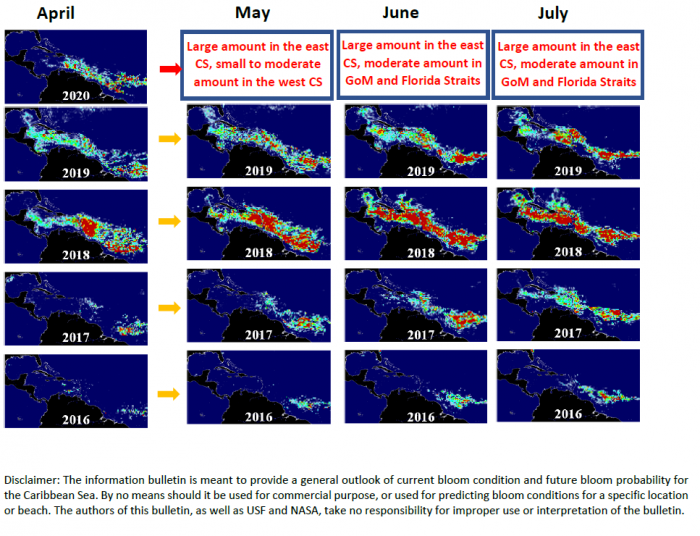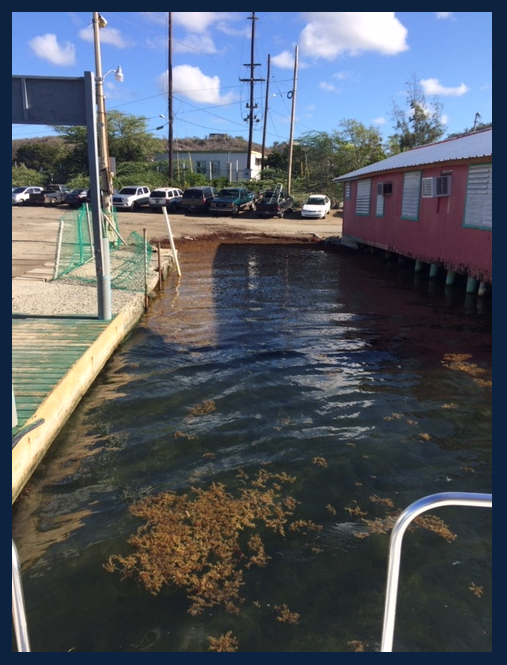The maps below show Sargassum abundance, with warm colors representing high abundance.

In April 2020, the Sargassum amount continued to increase across the central Atlantic. Large amount of Sargassum was observed in the Central West Atlantic (CWA, i.e., the region east of the Lesser Antilles in the maps below) and the Central East Atlantic (CEA). Large amount also appeared in most of the eastern Caribbean and small amount started to enter the western Caribbean. In the past two months, the eastern Caribbean Islands should have already experienced some beaching events. In the Gulf of Mexico (GOM) and Florida Straits, Sargassum remains to be minimal. In all regions combined, the total Sargassum amount increased from 4.3M tons in March to ~ 5.8 million metric tons in April, similar to April 2015 (5.2M tons) but lower than April 2019 (7.0M tons).
Looking ahead, the eastern Caribbean will see large amounts of Sargassum in May to July 2020. The western Caribbean will also experience some small to moderate amounts. Some of the Lesser Antilles Islands will continue experience moderate to strong beaching events on both their windward and leeward beaches. This situation may continue into summer, and the overall amount is likely to be similar to that in 2015. By June – July, Sargassum may reach the eastern Gulf of Mexico, enter the Florida Straits, and transport to the east coast of Florida. We will keep a close eye on how Sargassum in the tropical Atlantic and other regions may evolve in the next two months.
More updates will be provided by end of May 2020, and more information and imagery can be found from the Sargassum Watch System (SaWS, https://optics.marine.usf.edu/projects/saws.html )



